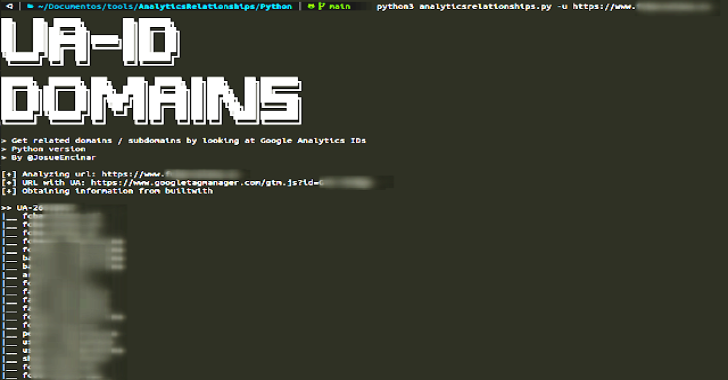Mubeng is an incredibly fast proxy checker & IP rotator with ease.
Features
- Proxy IP rotator: Rotates your IP address for every specific request.
- Proxy checker: Check your proxy IP which is still alive.
- All HTTP/S methods are supported.
- HTTP & SOCKSv5 proxy protocols apply.
- All parameters & URIs are passed.
- Easy to use: You can just run it against your proxy file, and choose the action you want!
- Cross-platform: whether you are Windows, Linux, Mac, or even Raspberry Pi, you can run it very well.
Why Mubeng?
It’s fairly simple, there is no need for additional configuration.
mubeng has 2 core functionality:
1. Run proxy server as proxy IP rotation
This is useful to avoid different kinds of IP ban, i.e. bruteforce protection, API rate-limiting or WAF blocking based on IP. We also leave it entirely up to user to use proxy pool resources from anywhere.
2. Perform proxy checks
So, you don’t need any extra proxy checking tools out there if you want to check your proxy pool.
Installation
Binary
Simply, download a pre-built binary from releases page and run!
Docker
Pull the Docker image by running:
docker pull kitabisa/mubeng
Source
Using Go (v1.15+) compiler:
GO111MODULE=on go get -u ktbs.dev/mubeng/cmd/mubeng
NOTE: The same command above also works for updating.
— or
Manual building executable from source code:
git clone https://github.com/kitabisa/mubeng
cd mubeng
make build
(sudo) mv ./bin/mubeng /usr/local/bin
make clean
Usage
For usage, it’s always required to provide your proxy list, whether it is used to check or as a proxy pool for your proxy IP rotation.
Basic
mubeng [-c|-a :8080] -f file.txt [options…]
Options
Here are all the options it supports.
mubeng -h
| Flag | Description |
|---|---|
-f, –file <FILE> | Proxy file. |
-a, –address <ADDR>:<PORT> | Run proxy server. |
| -d, –daemon | Daemonize proxy server. |
| -c, –check | To perform proxy live check. |
| -t, –timeout | Max. time allowed for proxy server/check (default: 30s). |
-r, –rotate <AFTER> | Rotate proxy IP for every AFTER request (default: 1). |
| -v, –verbose | Dump HTTP request/responses or show died proxy on check. |
| -o, –output | Log output from proxy server or live check. |
| -u, –update | Update mubeng to the latest stable version. |
| -V, –version | Show current mubeng version. |
NOTES:
- Rotations are counted for all requests, even if the request fails.
- Rotation means random, NOT choosing a proxy after/increment from proxy pool. We do not set up conditions if a proxy has been used. So, there is no guarantee if your request reaches the N value
(-r/--rotate)your IP proxy will rotate.
- Rotation means random, NOT choosing a proxy after/increment from proxy pool. We do not set up conditions if a proxy has been used. So, there is no guarantee if your request reaches the N value
- Daemon mode
(-d/--daemon)will install mubeng as a service on the (Linux/OSX) system/setting up callback (Windows).- Hence you can control service with
journalctl,serviceornet(for Windows) command to start/stop proxy server. - Whenever you activate the daemon mode, it works by forcibly stop and uninstalling the existing mubeng service, then re-install and starting it up in daemon.
- Hence you can control service with
- Verbose mode
(-v/--verbose)and timeout(-t/--timeout)apply to both proxy check and proxy IP rotation actions. - HTTP traffic requests and responses is displayed when verbose mode
(-v/--verbose)is enabled, but- We DO NOT explicitly display the request/response body, and
- All cookie values in headers will be redacted automatically.
- If you use output option
(-o/--output)to run proxy IP rotator, request/response headers are NOT written to the log file. - A timeout option
(-t/--timeout)value is a possibly signed sequence of decimal numbers, each with optional fraction and a unit suffix, such as “5s”, “300ms”, “-1.5h” or “2h45m”.- Valid time units are “ns”, “us” (or “µs”), “ms”, “s”, “m”, and “h”.
Examples
For example, you’ve proxy pool (proxies.txt) as:
http://127.0.0.1:8080
https://127.0.0.1:3128
socks5://127.0.0.1:2121
…
…
Because we use auto-switch transport, mubeng can accept multiple proxy protocol schemes at once.
Please refer to documentation for this package.
Proxy Checker
Pass --check flag in command to perform proxy checks:
mubeng -f proxies.txt –check –output live.txt
The above case also uses --output flag to save a live proxy into file (live.txt) from checking result.

Proxy IP Rotator
Furthermore, if you wish to do proxy IP rotator from proxies that are still alive earlier from the results of checking (live.txt) (or if you have your own list), you must use -a (–address) flag instead to run proxy server:
mubeng -a localhost:8089 -f live.txt -r 10
The -r (–rotate) flag works to rotate your IP for every N request value you provide (10).

Burp Suite Upstream Proxy
In case you want to use mubeng (proxy IP rotator) as an upstream proxy in Burp Suite, acting in-between Burp Suite and mubeng to the internet, so you don’t need any additional extensions in Burp Suite for that. To demonstrate this:

In your Burp Suite instance, select Project options menu, and click Connections tab. In the Upstream Proxy Servers section, check Override user options then press Add button to add your upstream proxy rule. After that, fill required columns (Destination host, Proxy host & Proxy port) with correct details. Click OK to save settings.
OWASP ZAP Proxy Chain
It acts the same way when you using an upstream proxy. OWASP ZAP allows you to connect to another proxy for outgoing connections in OWASP ZAP session. To chain it with a mubeng proxy server:

Select Tools in the menu bar in your ZAP session window, then select the Options (shortcut: Ctrl+Alt+O) submenu, and go to Connection section. In that window, scroll to Use proxy chain part then check Use an outgoing proxy server. After that, fill required columns (Address/Domain Name & Port) with correct details. Click OK to save settings.
Limitations
Currently IP rotation runs the proxy server only as an HTTP protocol, not a SOCKSv5 protocol, even though the resource you have is SOCKSv5. In other words, the SOCKSv5 resource that you provide is used properly because it uses auto-switch transport on the client, but this proxy server DOES NOT switch to anything other than HTTP protocol.
















